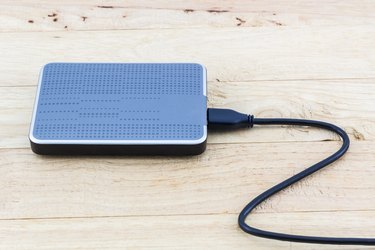
How to Repair an External Hard Drive. As with any piece of electronic equipment, plenty of things can go wrong with an external hard drive. There are two types of problems: hardware and software. Hardware problems are physical flaws that prevent the discs from spinning and accessing data. Software problems are digital mixups that make retrieving data more difficult.
Step 1
Figure out whether you need a hardware or software fix. Look for grinding sounds from your drive or humming that starts or stops. These are signs that the actuator arm and discs are no longer in alignment and your drive is timing out. If it seems as though nothing is wrong with your hard drive, it's probably time for a software fix.
Video of the Day
Step 2
Run one of the many software fixes, if you think the problem is related to software. These programs feature on-screen directions, making it easy for you to progress through them. If this works, you don't need to fix a physical problem.
Step 3
Remove the many tiny screws that holds the drive together. Eventually, you'll get to the innards of your drive. Be very careful not to bend or force a piece to go where it doesn't want to.
Step 4
Determine if you've set things straight. Look to see whether anything was loose inside your external hard drive. If you have recently dropped it or traveled with it, it is possible that something came loose. Also check that all the arms and platters are straight and do not appear bent in any way. If they are bent, straighten them with your hands or pliers.
Step 5
Put everything back together and check that everything in your external hard drive is working properly.
Step 6
Try using the external hard drive on another computer. Maybe your computer or USB port is the problem and needs replaced.
Video of the Day